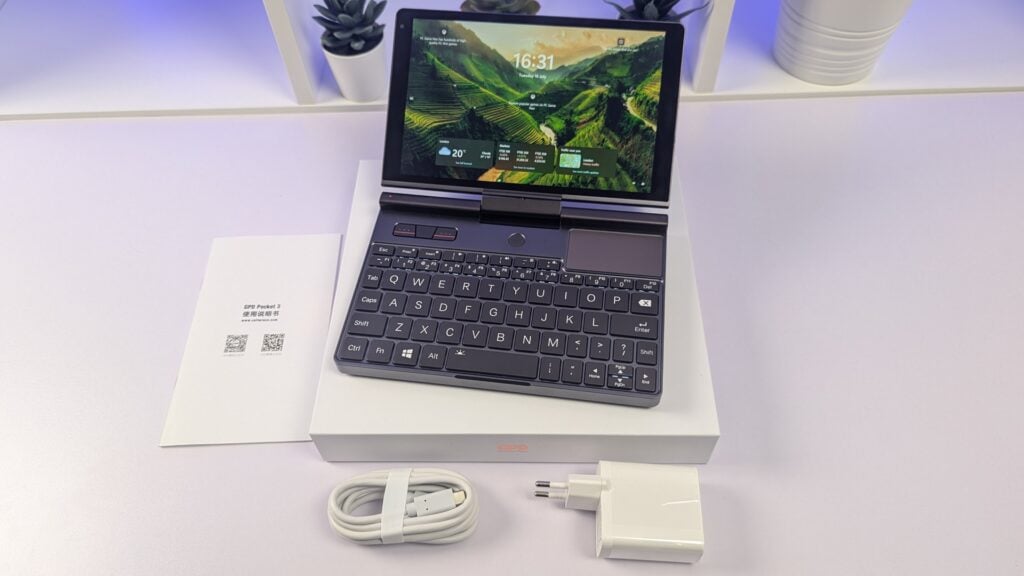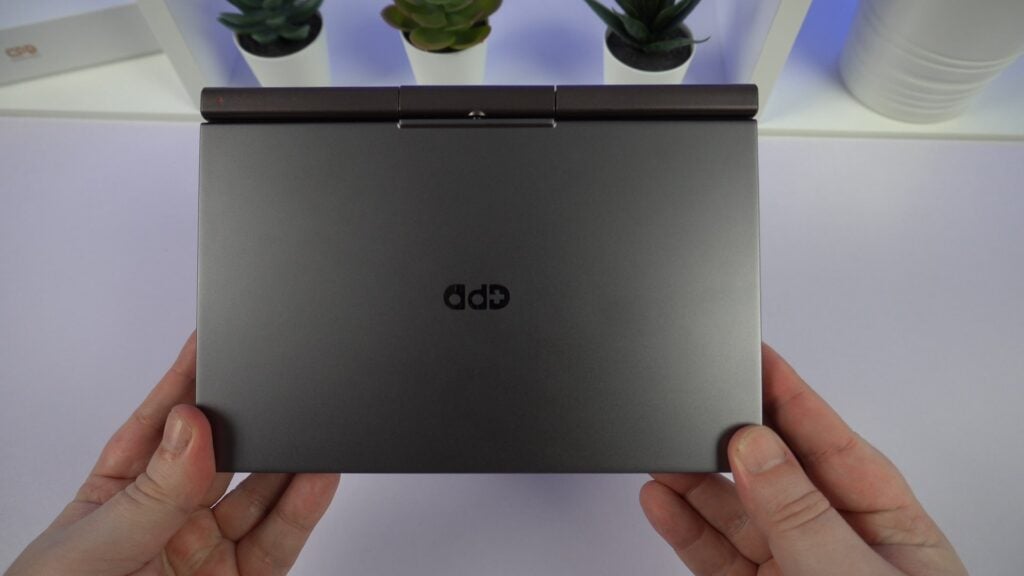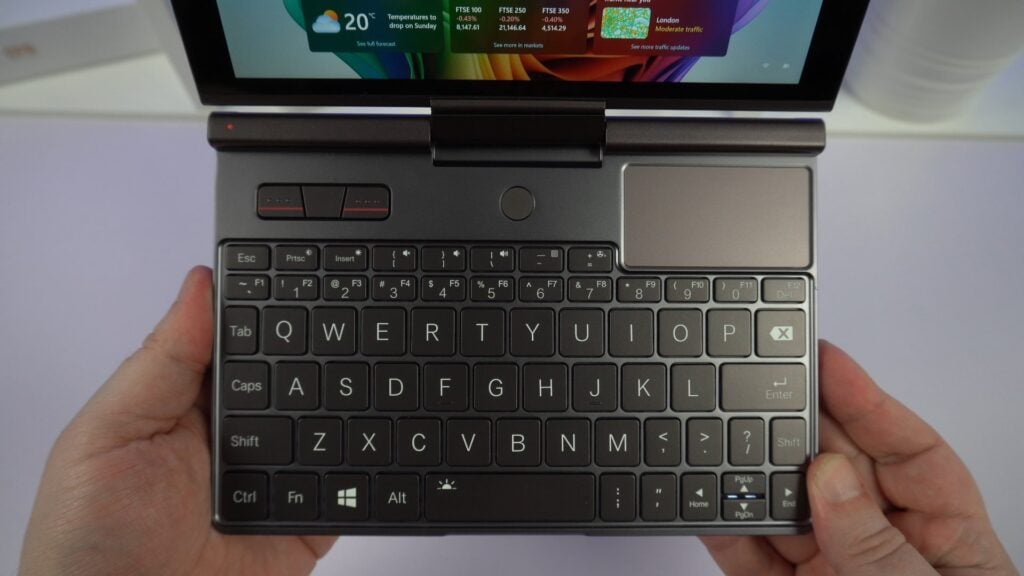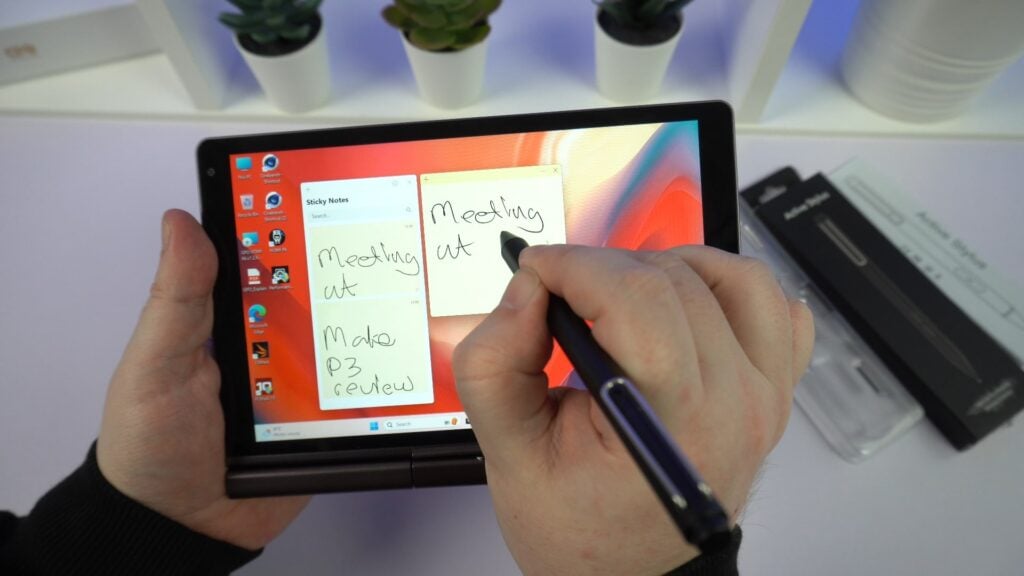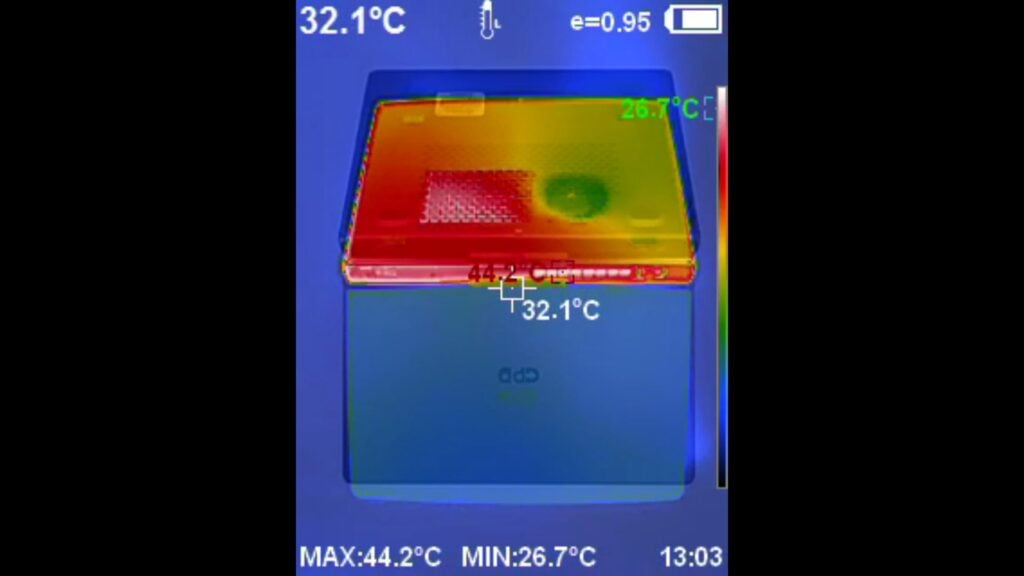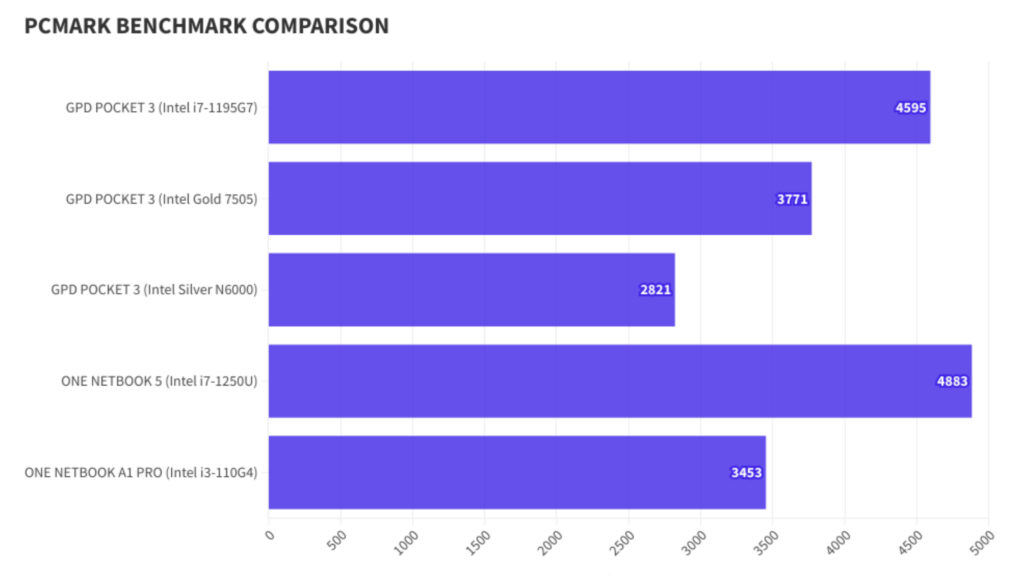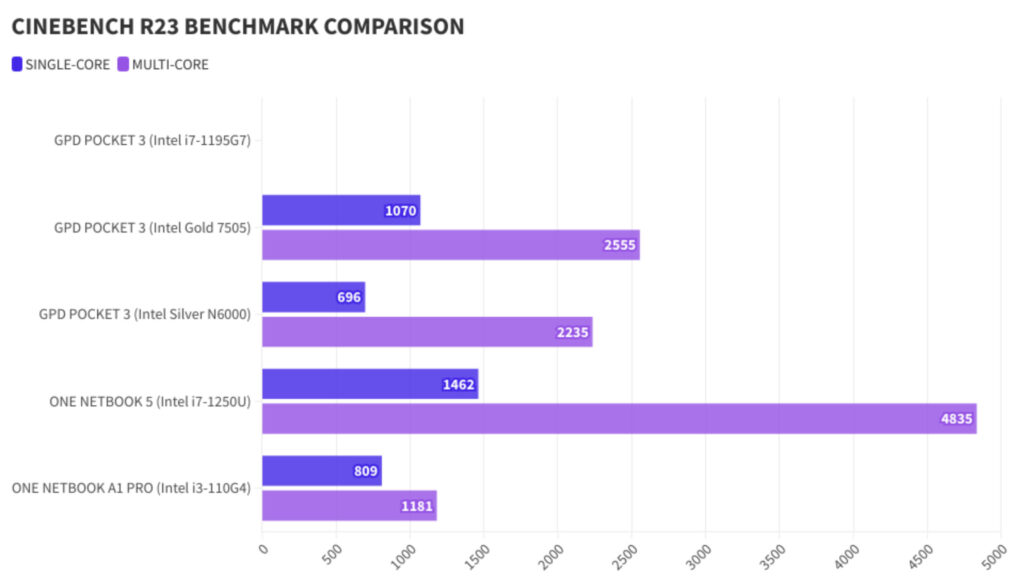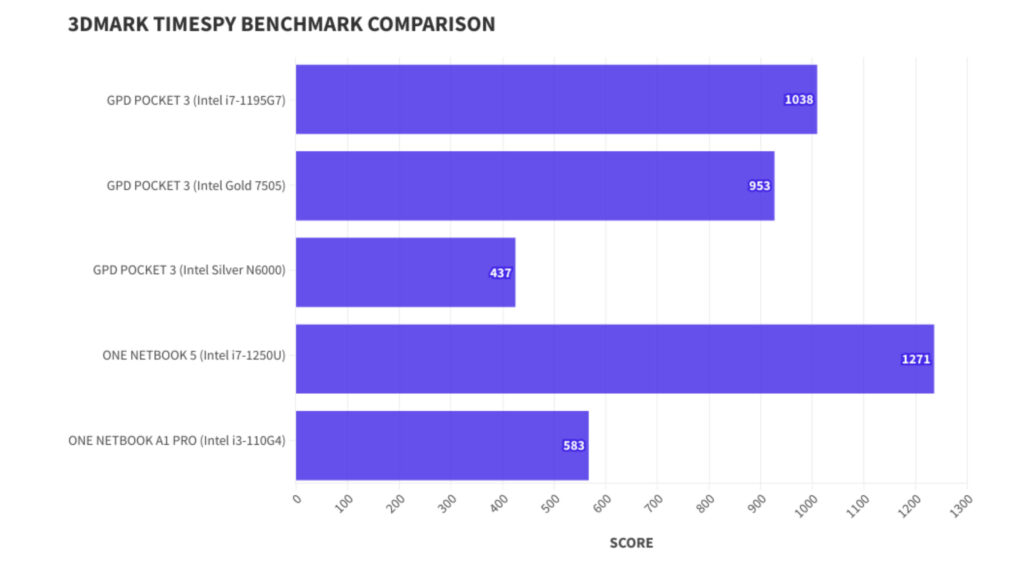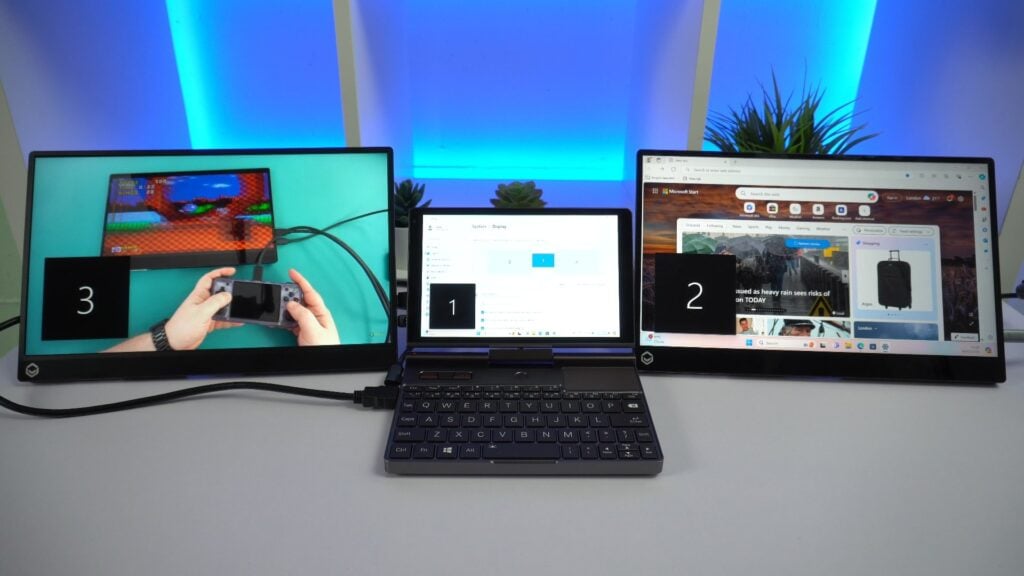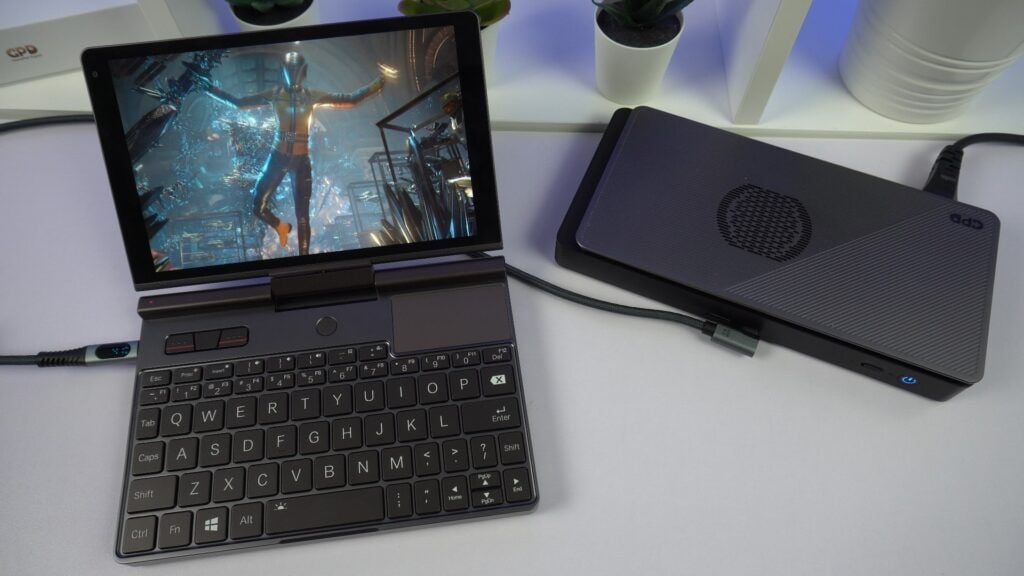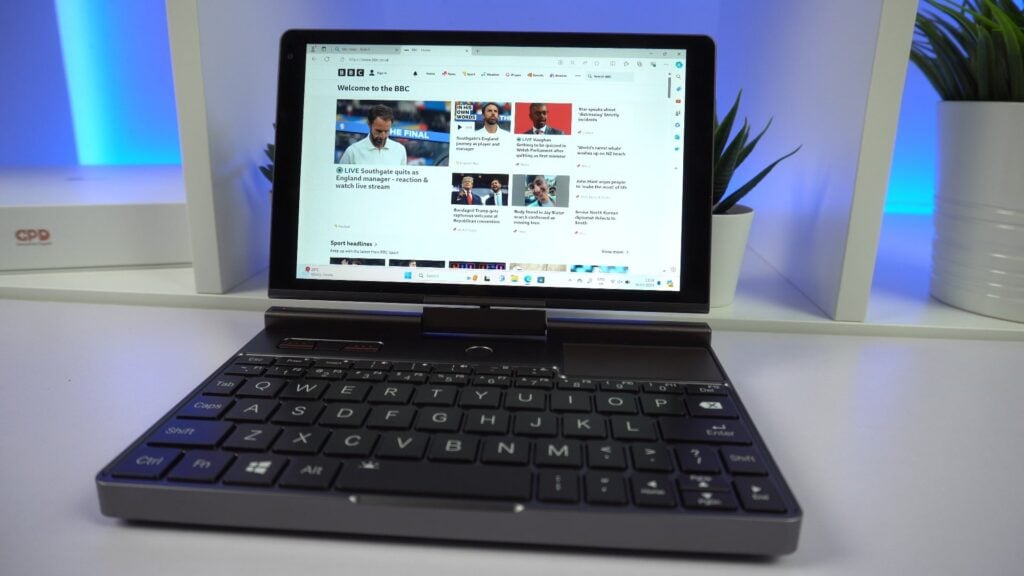GPD Pocket 3 Review
-
Design
(5)
-
Build Quality
(5)
-
Display
(4.5)
-
Performance
(4.5)
-
Features
(4.5)
Summary
The GPD Pocket 3 is a versatile 2-in-1 mini laptop and tablet, featuring a compact and portable design that fits easily in a small bag or jacket pocket. It includes a modular port for added flexibility and industry-specific applications, making it ideal for both everyday use and specialized tasks.
Overall
4.7User Review
( votes)Pros
- Compact & Portable
- Versatile 2-in-1 mini laptop and tablet design
- Modular port including RS-232 & KVM options
- High resolution 8″ touchscreen
- Good performance for its size
Cons
The GPD Pocket 3 has received a few revisions over the years. The latest GPD 2024 refresh features the Intel Pentium Gold 7505 CPU to replace the N6000 low-end version. Lets see how it fares in our GPD Pocket 3 review, including benchmarks and comparisons with others, including the ONENETBOOK 5 and A1 Pro.
GPD Pocket 3 Review Video
GPD Pocket 3 Unboxing
We start the GPD Pocket 3 review with a brief look at the contents. Inside the box you can find the GPD Pocket 3 itself, a user manual in English and Chinese. a power supply – we will include the correct adapter for your country, and last but not least a USB Type-C charge cable.
GPD Pocket 3 Overview
Next in our GPD Pocket 3 review we take a closer look at the 2-in-1 mini laptop itself. The GPD Pocket 3 measures around 7.79 x 5.3 x 0.78 inches (19.8 x 13.7 x 2.0 cm) and weighs 725g (1.59 lbs).
The gun metal coloured case is made from aluminium alloy and houses advanced components like the intel pentium gold 7505 processor. It does add little extra weight, but it feels sturdy in your hands and keeps it well protected from bumps and scrapes.
The lid opens to reveal an 8” H-IPS touchscreen display with a 1920×1200 resolution. The 2-in-1 design allows you to twist the display and fold it closed to create a tablet style functionality, perfect for a GPD Pocket 3 mini laptop. Lifting and twisting it back restores it back for laptop use.
The display has a 2 million pixel camera with a 1600×1200 resolution and built-in microphone, perfect for high-end video conferencing. It is useful for online video or audio only meetings.
The lower half features left, middle and right mouse buttons, a power button with a built-in fingerprint scanner, and on the right a touchpad supporting up to three finger gestures.
There is a full QWERTY keyboard, it is backlit and can be switched off and on. The keys are chocolate style and fairly low profile, requiring minimum effort to press. I spent some time using the keyboard writing this review and I found it very comfortable to use on the GPD Pocket 3 mini laptop. The keys are a perfect size and it feels like typing on a normal keyboard, but with your hands closer together than say compared to a desktop keyboard.


On the left side we have a USB Thunderbolt 4 port and a HDMI port for output to an external display. And on the right side there are two USB 3.2 ports and a 3.5mm headphone port.
The back has a 2.5gbps ethernet port for fast wired data. And last but not least is a modular port, adding flexibility to the GPD Pocket 3 mini laptop. It comes with a USB 3.2 port module as standard and can be swapped with other modules sold separately.
Modular port with RS-232 & KVM capabilities
Replacing the module is simply a case of removing the two screws on the back of the GPD Pocket 3, removing the module and inserting the new one, then screwing it back in. There are currently two modules available for purchase here, a single port KVM Module with HDMI and USB input and a RS-232 DB9 port.
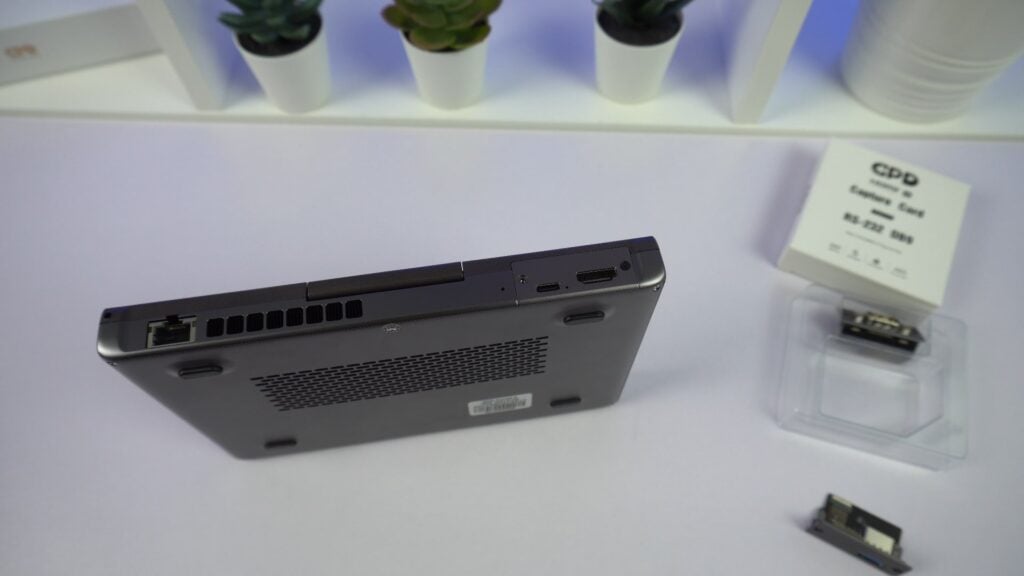
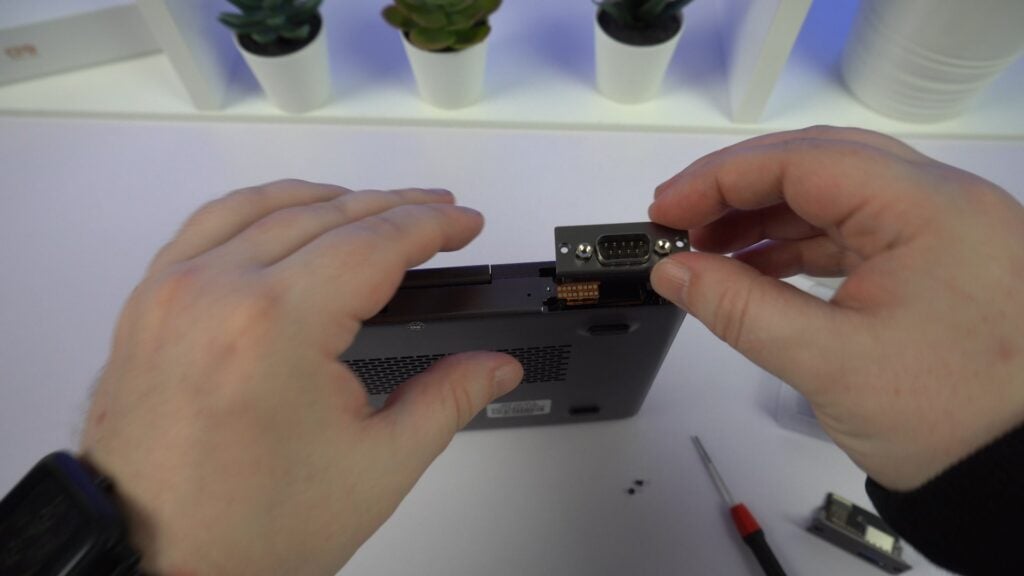
These two modules are especially useful for industry, as an example with hardware level access, requiring data analysing or controlling with a display, keyboard and mouse. There is software pre-installed on the Pocket 3 to use the KVM module.
180° Rotatable Touchscreen Display
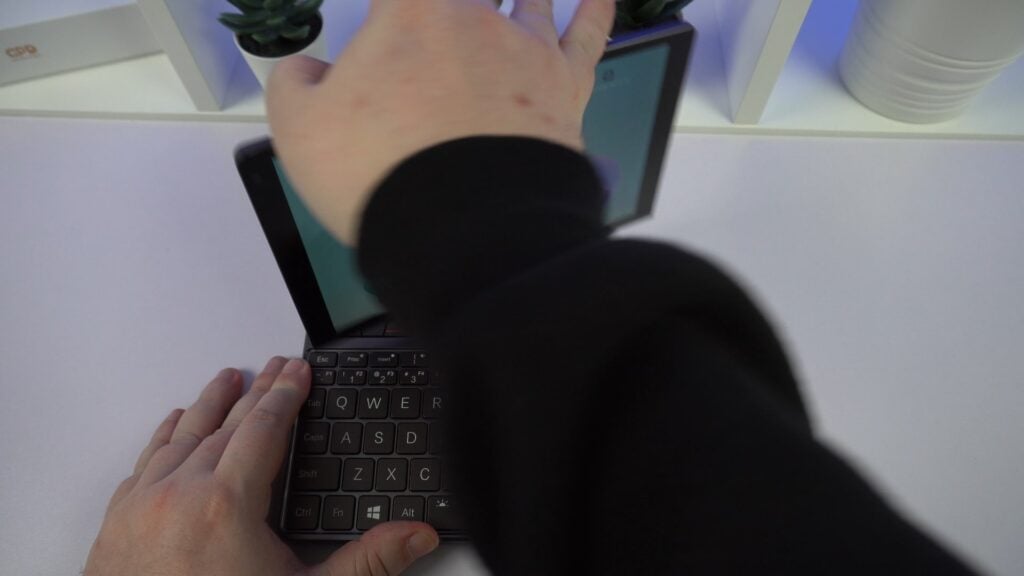
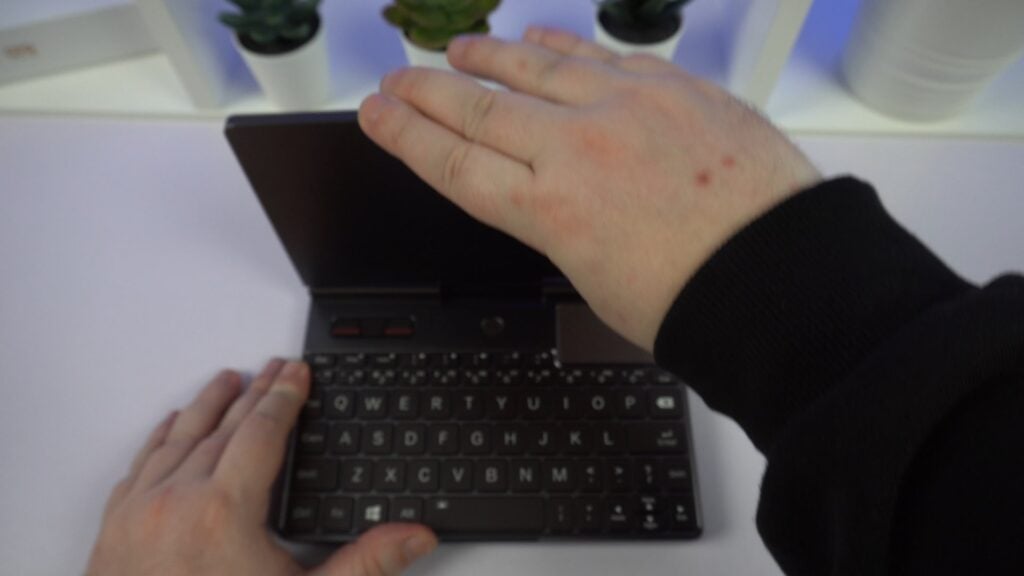
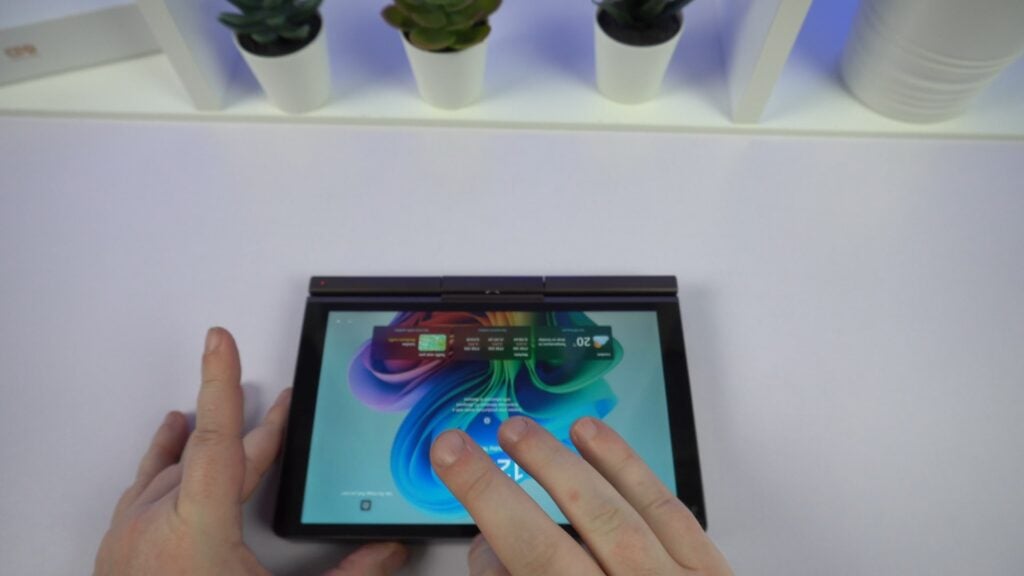
As mentioned the GPD Pocket 3 2024 can be transformed from a laptop into a tablet with a twist of the display. It will be thicker than your usual tablet device, but it does offer a more rugged appearance and provide grip which is reassuring.
It is fully compatible with the GPD stylus and Surface Pen using the MPP2 protocol. It is great for taking notes and drawing for example. Unlike me who can not draw anything 🙂
Technical Specifications
This upgraded Pocket 3 has improvements mainly to the CPU, let’s take a closer look at the specs as well as run battery life, fan noise and temperature tests as part of this GPD Pocket 3 review.
| DISPLAY | 8″ H-IPS, 10-point Touch Control with 1920×1200 resolution, 284 PPI, active stylus support with 4096 levels of pressure sensitivity |
| CPU | Intel Pentium® Gold 7505, 2 cores and 4 threads up to 3.5Ghz up to 25W TDP |
| GPU | Intel UHD Graphics for 11th Gen up to 1250 MHz, 48 EUs |
| RAM | 16GB LPDDR4X 3733 |
| STORAGE | 512GB M.2 2280 NVMe 1.3 PCIe Gen 3.0 x4 |
| COMMUNICATIONS | Wi-Fi 6E, Bluetooth 5.3, 2.5Gbps Ethernet |
| I/O | Thunderbolt 4 HDMI 2.0b 2x USB 3.2 Gen2 Type-A Chocolate style, flat island type QWERTY backlit full keyboard Power button with fingerprint scanner Touchpad and 3 button mouse controls 3.5mm headphone port |
| CAMERA | 2 million pixels, resolution: 1600×1200 with microphone |
| BATTERY | 38.5Wh, 7.7V==5000mAh×2 Series |
| DIMENSIONS | 7.79 x 5.3 x 0.78 inches (19.8 x 13.7 x 2.0 cm) |
| WEIGHT | 725g (1.59 lbs) |
Modules
1x USB 3.2 Gen1 Type-A (included) for connecting high-end peripherals.
1x RS-232 (available separately)
1x KVM Control Module (available separately)
It runs on two 5000mAh rechargeable batteries. In our tests while running the high demand Cinebench benchmark on a loop we got a battery life of 2 hours 10 minutes on the GPD Pocket 3 ultrabook. And while idle on the desktop we saw around 11 to 12 hours battery life. Average usage will put you around 5-6 hours.
In our fan noise and temperature tests while running Cinebench, we got a highest fan noise of 59 dB and highest temperature of 49°C, fairly quiet and definitely cool.
GPD Pocket 3 System Benchmarks
We will be comparing this GPD Pocket 3 with Intel Core 7505 model with the previous two models as well as the ONENETBOOK 5 and ONENETBOOK A1 Pro.
PCMark
For PCMark we overall see good scores for the Pocket 3, far ahead of the previous Intel Pentium Silver N6000 model (read our review here) and in front of the One Netbook A1 Pro. It does remain behind the more expensive and powerful Intel Core i7 found in the other Pocket 3 and One Netbook 5.
The laptop for students score makes it ideal for your day to day tasks such as taking notes in classes and working on large documents while listening to some music. It is also ideal as a laptop for business, again for your day to day workload whether that be in the home or office.
Cinebench R23
In Cinebench R23 we see a fairly good score for this GPD Pocket 3. We have faster single-core performance as well as faster multi-core performance compared to its predecessor the N6000 and A1 Pro model’s. Again not as high performance as the 11th-generation Intel Core i7 processor i7-1195G7, but the Intel Pentium Gold 7505 processor offers a solid alternative.
3DMARK
While these ultra-portable notebooks are not designed for gaming on, they do have integrated GPU’s. These are also used for tasks such as media decoding, up to image and video editing.
In TimeSpy we got a very impressive score of 953, beating the Pentium Silver N6000 and A1 Pro by a large amount. It even comes fairly close to the i7 model which is impressive.
Dual monitor support
By using the USB-C and HDMI ports you can connect two external monitors supporting up to 4K 60Hz, or a single monitor via the USB-C port supporting up to 8K 60Hz. Here we are showing it with our DroiX PM14 4K portable monitors which look great together!
Thunderbolt 4 and External Graphics Dock Support
With the USB Thunderbolt 4 port you can connect it up to an eGPU such as the onbrand GPD G1 eGPU docking station, or the ONEXPLAYER ONEXGPU . These will massively increase the graphics performance and allow for demanding tasks such as image and video editing as well as rendering. And naturally this will vastly improve your gaming experience from low demanding games to higher ones.
The GPD Pocket 3 compact laptop with the G1 sees an impressive boost, in Time Spy we got 953 on the iGPU compared to 6,067 here. And in the more demanding Night Raid and Fire Strike benchmarks we got 18,129 and 11,564 respectively which are very close scores to the ONENETBOOK 5. The eGPU offers a more desktop-like experience in the home or office where you may need that extra boost in performance and not have to consider battery life for example.
Final thoughts
In terms of performance, the Intel 7505 small-sized laptop offers a good increase in performance over the previous Silver N6000 laptop for business. We saw higher scores in all of the benchmarks, especially in GPU performance. While still not as high performance as the i7 models, those models do cost a fair amount more, which is something to keep in mind.
For day to day usage whether that be at home or in the office for working on large office documents, and even light image editing, you will have no issues. You also have the capability of connecting to two additional monitors to the GPD Pocket 3 laptop for business. And of course, if you do require more performance you also have the option of an eGPU.
The real strengths are in its industry use with the option of having an RS-232 port making it an excellent choice for users. There are external options available but these can be unreliable and it means additional hardware and cables to carry around. Having it built-in makes it far more convenient.
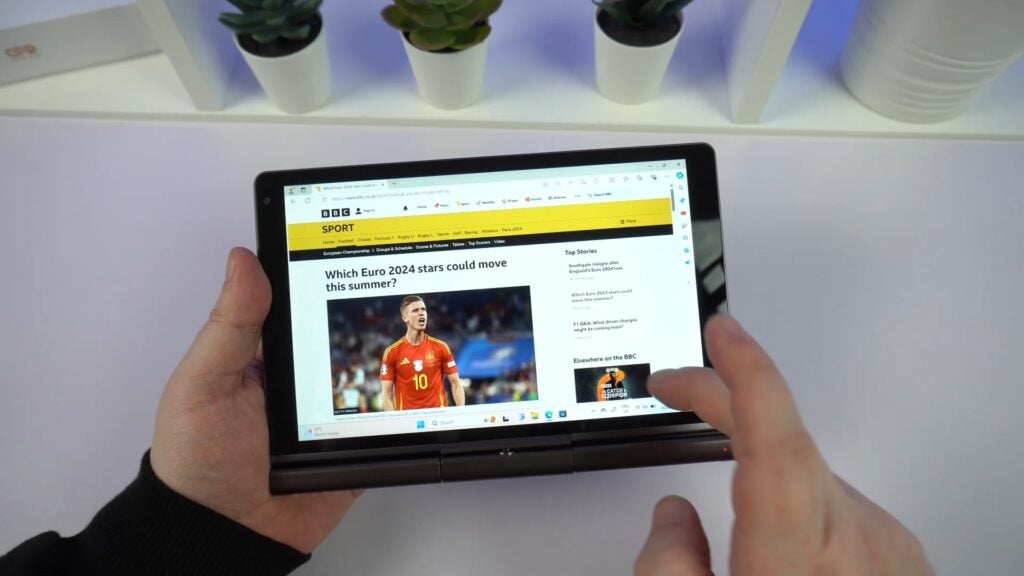
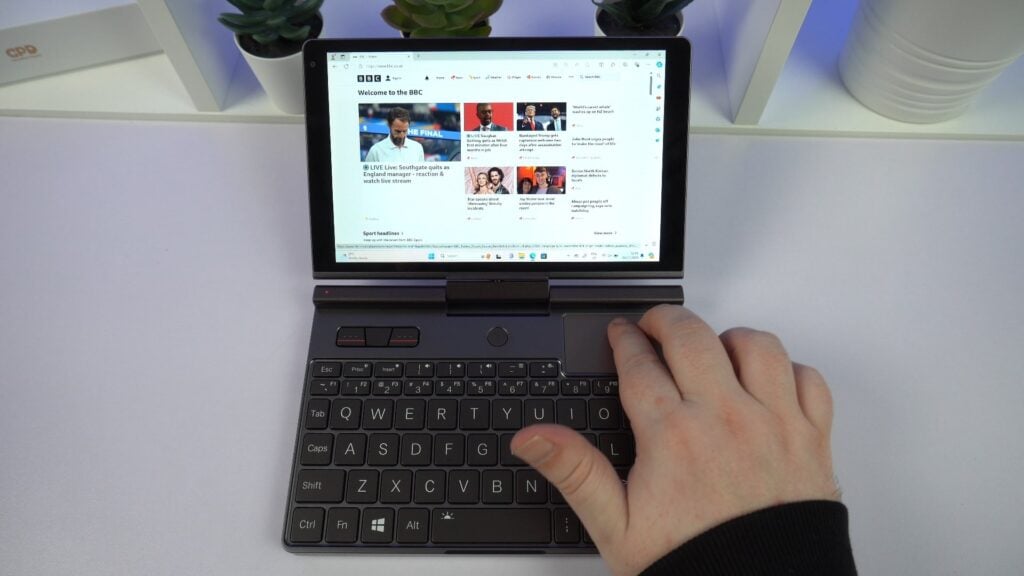
The portability is another large positive. While the 8” touchscreen may seem small, it’s a great balance in terms of portability and useability. It’s small enough to fit in a jacket pocket or small bag and easily carried one handed in both laptop or tablet mode.
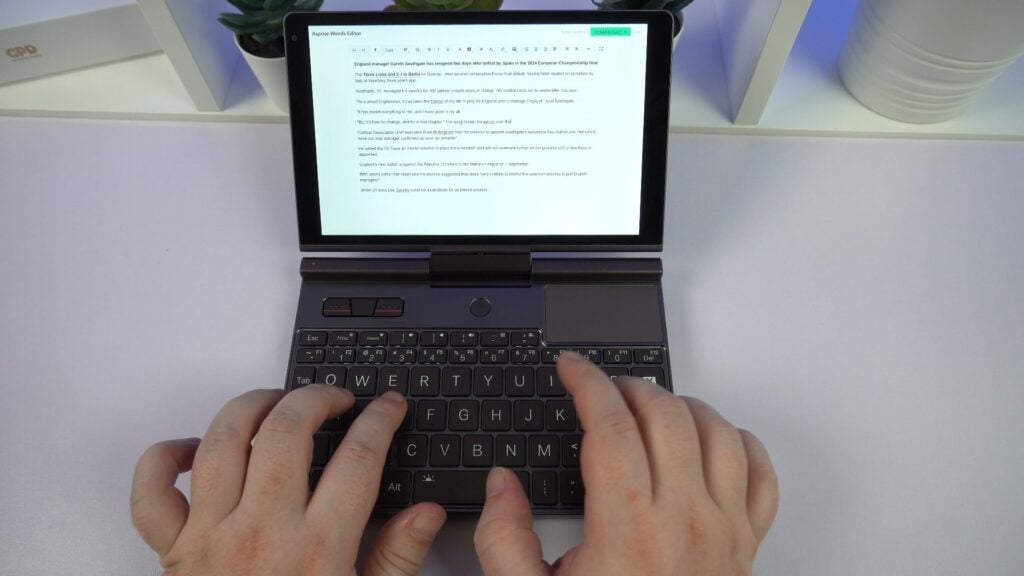
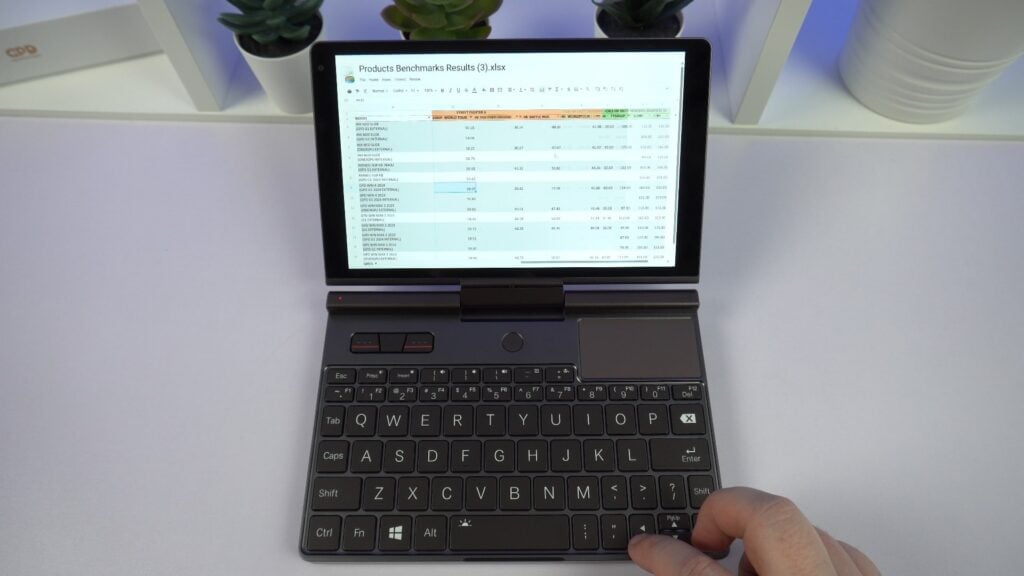
I could not really find anything to dislike about the GPD Pocket 3. The series has been a popular ultra-portable notebook for a good few years now and it has everything you need for day to day use whether that be at home, in the office or offsite work. We highly recommend it if you want a solid, fast and reliable 2-in-1 swivel screen mini laptop and tablet that won’t let you down.
You can learn more about and order the GPD Pocket 3 here. Use the discount code POCKET35OFF on the Checkout for 5% off. The code is valid for one month of the posting of this review and can not be used during store sales or other promotions.
That wraps up our GPD Pocket 3 review , we hope you have found it useful. If you do have any questions, please feel free to ask in the comments.
[azp_custom_product id=”40″]








